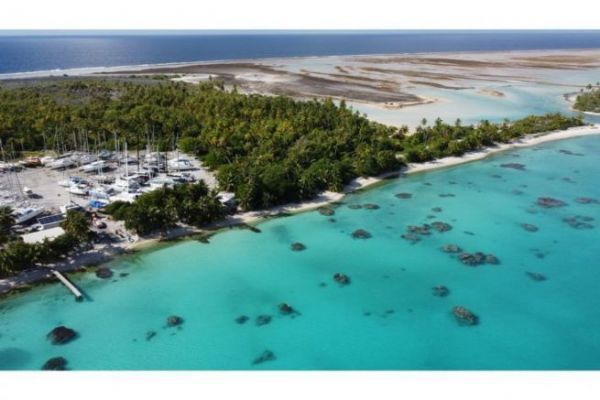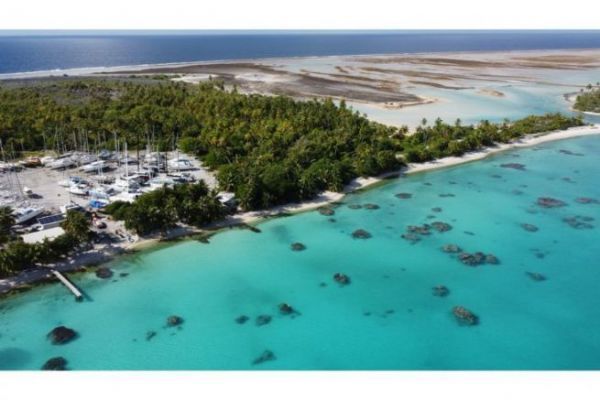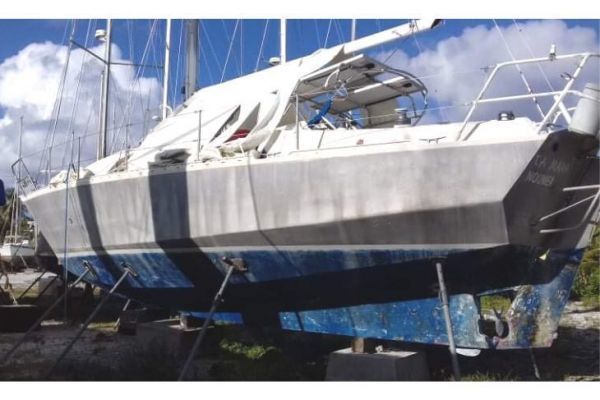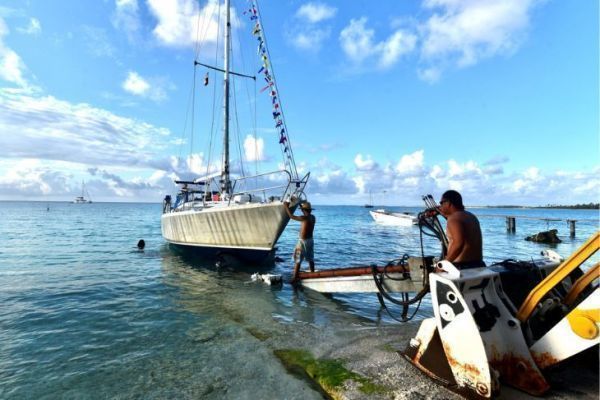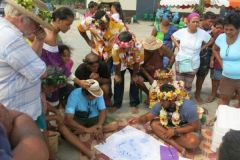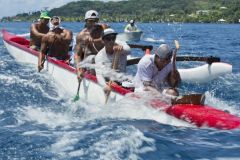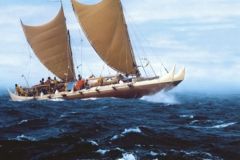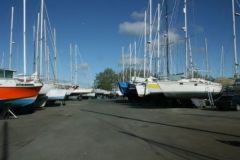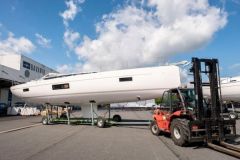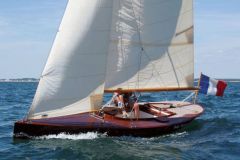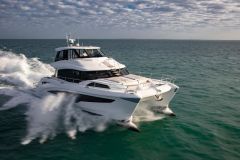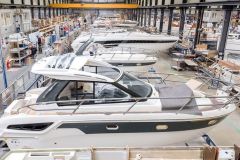Apataki, an atoll in the middle of the Tuamotu Islands
380 kilometers from Tahiti, among the seventy-six islands of the Tuamotu archipelago, Apataki atoll has some 20 km² of land and more than 700 km² of lagoon. The atoll's activity is concentrated in the village of Niutahi, supplied by schooners, where some 450 inhabitants live. Nearly ten nautical miles away, the Lau family has set up their shipyard on their private motu.
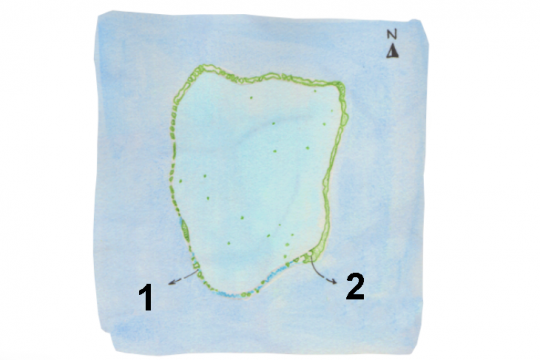
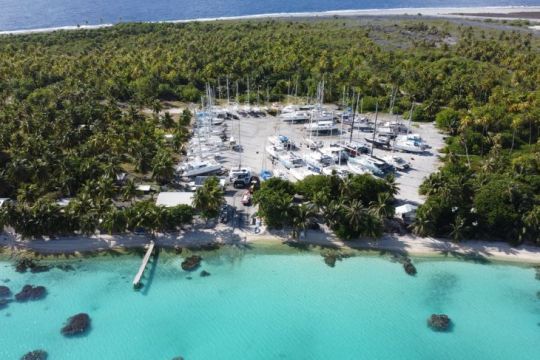
The Apataki construction site, a family history
The whole family has been together on the motu since 1992. At that time, the family had gathered around a pearl farm and took advantage of the pearl farming market, which was sufficiently developed, but today the establishment no longer exists. The family, which had been in regular contact with sailboats that came to visit the farm, decided to respond to the demand of boaters by setting up a boatyard on its motu in July 2009. In an exceptional setting between the lagoon, the lagoon and the reef, in the middle of the coconut grove, Apataki Carénage Services became one of the few boatyards in Polynesia.

Alfred Lau is at the origin of the project and manager of the SARL. His wife Pauline takes care of the administrative tasks: she makes the reservations and invoices for the clients, manages the accounting. Tony, their son, gradually takes over the business and is in charge of repairs and technical orders for the site. He is helped daily by an employee, Menty, who completes the team.
To ensure their autonomy and some income for supplies in the village, Alfred's parents, who also live on the motu, have other activities: Papi produces eggs that supply the stores in the surrounding atolls, tamanou, and fruits and vegetables. Mamie offers to rent a bungalow to boaters for whom the work to be done would be so important that it would prevent them from living on board.
They are also helped by Nini, who grows copra on the motu.
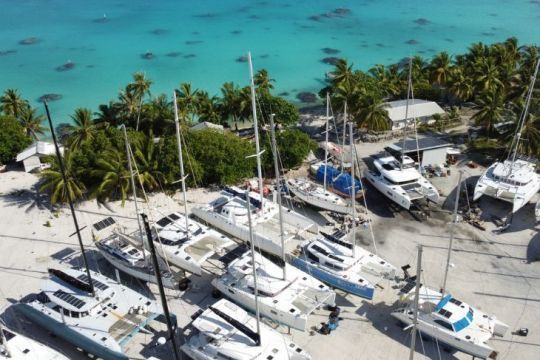
The facilities
It is possible to reach the site by boat or by air, flying from the island of Tahiti to Apataki airfield or Arutua airfield, located a little further west. If you come by plane, you will have to order a transport by boat directly from the shipyard team.
The landing on the motu is done by a small wooden boom.
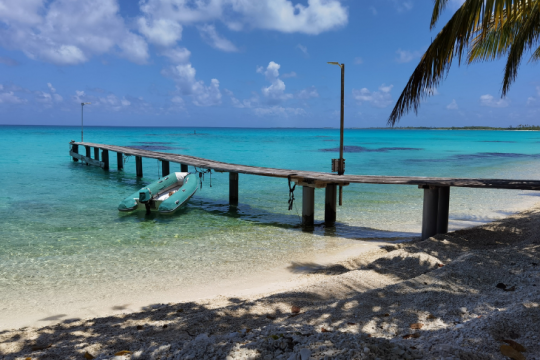
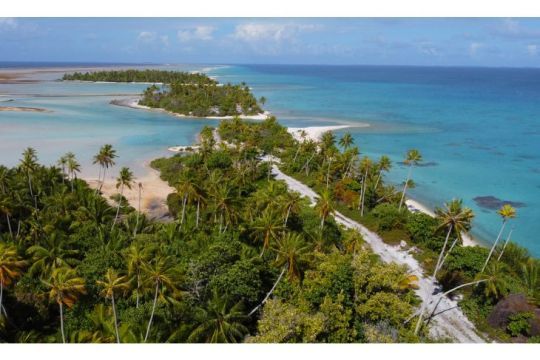
On the work area, there are regular water points drawn from the ground, convenient for connection. Electricity can be supplied from solar installations, and extension cords can be pulled to get electricity near the boat.
The buildings are basic but sufficient: several toilet blocks with toilets and showers are present on the careening area. A small faré by the sea allows boaters to have a place to settle down, eat or take advantage of the shipyard's WiFi. To get water to drink, visitors will go to Pauline's house and take advantage of the family's rainwater tank.
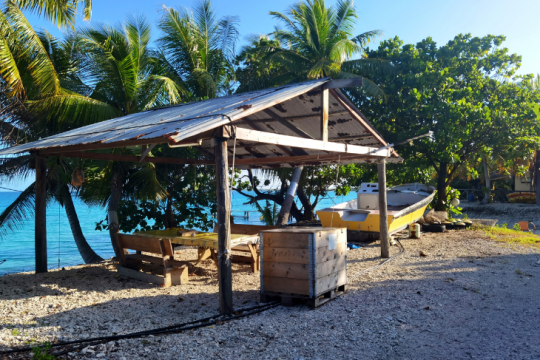
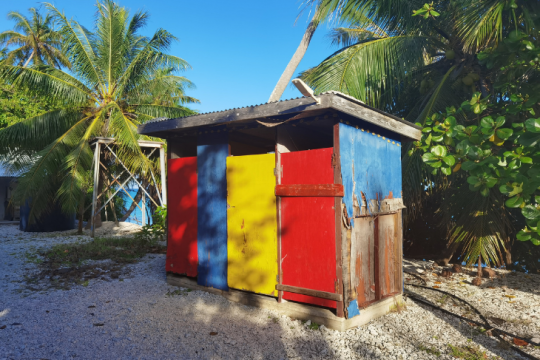
On site, several services
Lifting
The shipyard raises fifty to seventy yachts from all over the world each year, divided more or less equally between monohulls and catamarans. It is possible to lift boats weighing up to twenty tons, monohulls with a draft of less than 2.20 meters and catamarans less than 9 meters wide.
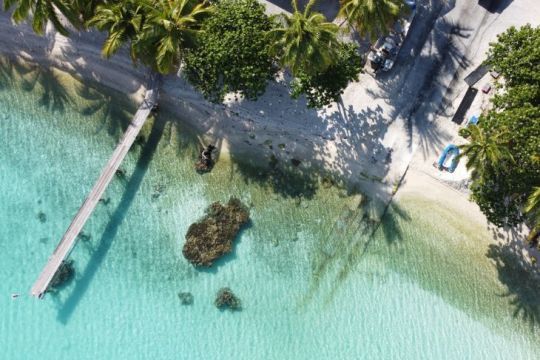
The team takes advantage of a concrete ramp specially installed on the reef, and its technique is original to say the least:
After clearing the dead coral that accumulates on the edge of the motu with a snow shovel, she lowers from the ramp a four-axle hydraulic wagon, designed in Loire-Atlantique to adapt to the site conditions. A 75-horsepower, four-wheel drive backhoe steers the trailer.
With the dolly in the water, the team then dives in with masks and snorkels to correctly position the boat on the pads and optimize the wedging. Then the boat is taken out of the water, and installed in its place after having been rinsed with fresh water by the employees. The same operation is performed in reverse, when the boat is put back in the water.
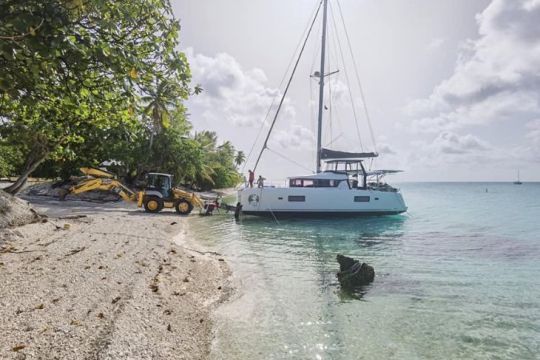
Maintenance, work and repairs
The shipyard offers boaters maintenance and repair work. Painting, lamination, anti-osmosis treatment, but also plumbing and mechanics are concerned. Boaters can also do their own work, on land or at anchor in front of the shipyard, and call on Tony for advice or for material and parts, which he will then bring from Tahiti.
The ideal position of the motu, on a water table, allows the use of fresh water for all works, which is far from being anecdotal in the territory.
The Apataki Carénage Services shipyard also offers wintering and storage of boats on the motu. The area protected by coconut trees is adapted for the safe storage of sailboats, for a short or long period. The boats are positioned on concrete blocks and crutches, possibly strapped to additional blocks on the sides.
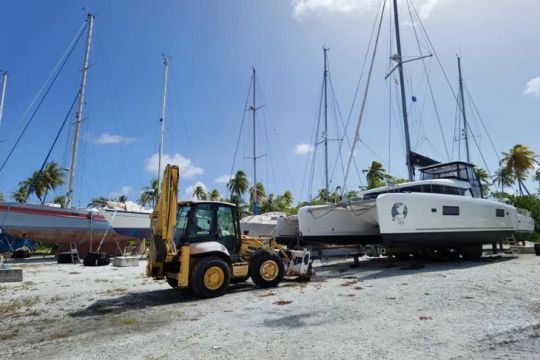

 /
/ 